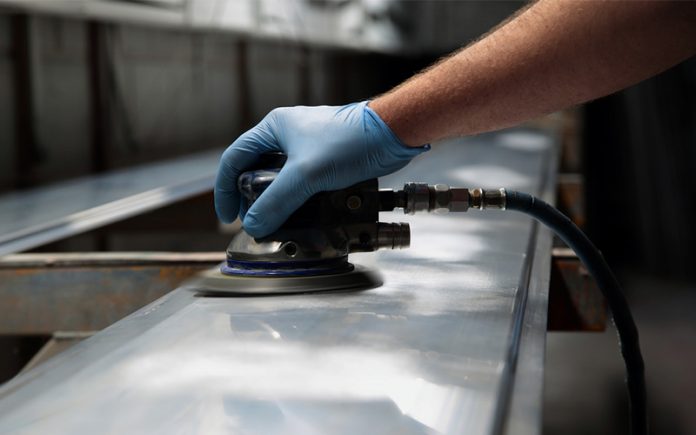It’s really annoying to see rust or old painting wearing out to your metal furniture or tools. It gradually decays the lifetime of the metal. In case of scratches, it really hurts to see them on any metal furniture. Fortunately, metal product manufacturers took your concern into consideration and most of the metal products are now made of stainless steel. However, it is important to keep your metal furniture and other metal objects free from rust, worn out painting, and scratches. In this article, we are going to discuss how to sand wood or metal to remove any rust or paint and how to remove deep scratches from stainless steel.
Sandpaper Sheets Basics
Sandpapers are used for sanding wood, metal and other surfaces by hands or power tools. There are different types of sandpaper for metal and wood uses. Sandpapers are made of either Garnet, Emery, Aluminum oxide, Silicon carbide or Zirconia alumina. Each type of sandpaper sheets has its distinctive uses. Garnet and Emery sandpapers are mainly used in hand sandpapers. Others are used in power sandpapers (sandpaper used in power tools). Traditionally sandpapers are backed by paper. But you can also buy fabric or other kinds of fiber backed sandpapers. Fabric and film sandpapers are best for sanding contours and hard-to-reach areas. Fabric sandpapers are also called wet sanding. However, the substance doesn’t determine the abrasive degree of a sandpaper. It is the grit number which represents the abrasive quality of a sandpaper. That’s why to find the best sandpaper for metal uses, you should inspect the grit number.
Sandpaper Grit Numbers
The grit number of sandpaper sheets indicates the number of abrasive particles on those sandpapers. The lower the number, the higher the abrasive particles, which indicates that it will sand more material and the chances of leaving scratches are high. On the other hand, a higher grit number indicates a lower amount of abrasive particles. The range of sandpaper grit number, available on the market is from 24 to 2000. Sandpaper sheets beyond 600 grit number are used for industrial purposes. To sand rust or worn out paint in the following techniques, you will need something between 80 grit and 200 grit sandpapers.
How to Sand Metal?
There are many ways of sanding metal. Normally the heavy sanding steel process is called grinding and it is done with the help of angle grinders and sandpaper or other Abrasives. In the case of finishing or furnishing process, light sanding techniques are used. Whatever sanding techniques are used, the right knowledge of sandpaper and other abrasives is fundamental. In the following sections, effective sanding steel methods are explained after a necessary discussion on sandpapers.
1. Using an Orbital or Random Orbital Sander
An orbital is the best sander to remove paint or rust from any metal surface. The reason behind is that the orbital sanders are very light and effective for light sanding. Unlike other sanders, it doesn’t have the capability of excessive sanding which might ruin the metal surface. Because of the lightweight and sensitive sanding ability, an orbital sander is the most suitable for this job. However, you can also use a random orbital sander if you don’t possess an orbital sander. Random orbital sanders have a speed control system and you must reduce the sanding speed while working with it. It is imperative to enforce light and precise force all time while working on a thin metal surface.
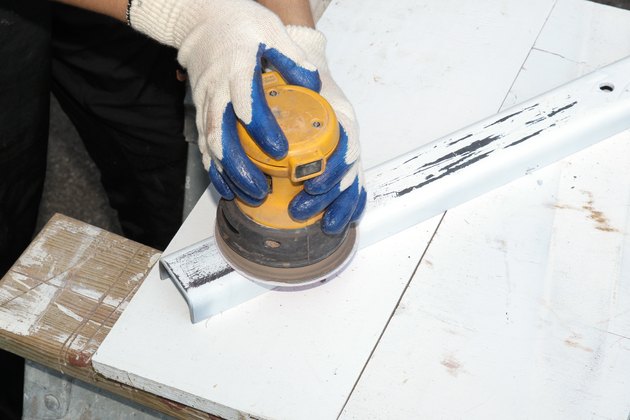
Step 1: Sand the metal surface with an Orbital Sander or Random Orbital Sander.
To start the sanding steel process, install an 80 grit sanding sheet or disk to your orbital sander or random orbital sander (with reduced sanding speed). Then sand all the metal surface. To get the best result, move the sander in a similar direction. Stop using the sander when you notice the shiny metal surface you were looking for.
Then remove the 80 grit sandpaper and install a 200 grit sandpaper to the sander. Then, sand the whole surface again. It is important to remove the 80 grit sandpaper when the shiny part emerges. Otherwise, your metal can be weakened by excessive sanding.
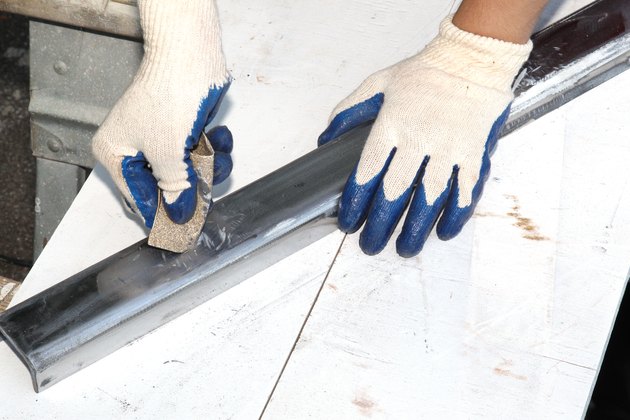
Step 2: Use hand sandpaper as supplementary
After sanding with the sander, use hand sandpaper to areas where the sander couldn’t reach or where any paint or rust is visible.
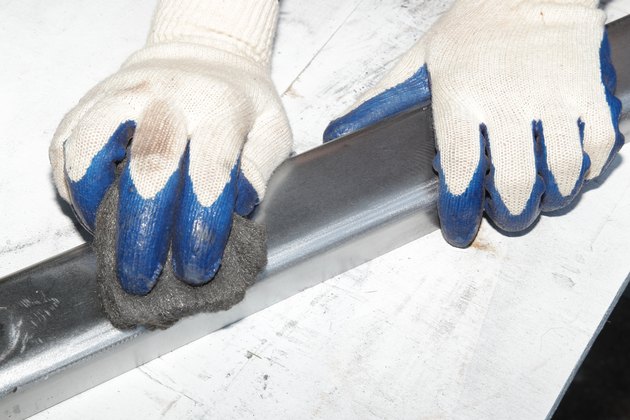
Step 3: Use a Steel Wool to finish
In the end, use a Steel Wool on the surface to get a smooth finish. This will remove swirl marks (if any).
2. Using a Sand Block
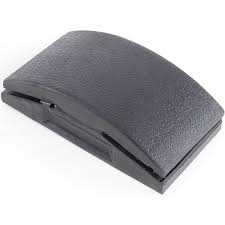
Sanding with a sanding block is similar to sanding with an orbital sander. It is the easiest way of how to sand steel and you can make a sanding block yourself. Sanding block requires human force and it takes a bit extra time. For this process, you just need sandpapers, a sand block and a steel wool.
Attach an 80 grit sandpaper to the sand block. Now start sanding the metal surface back and forth. It is preferable to keep the sanding motion same throughout the sanding process. When the paint or rust fall off, remove the 80 grit sandpaper from the sand block and attach a 200 grit sandpaper to the block. Now sand the metal surface again.
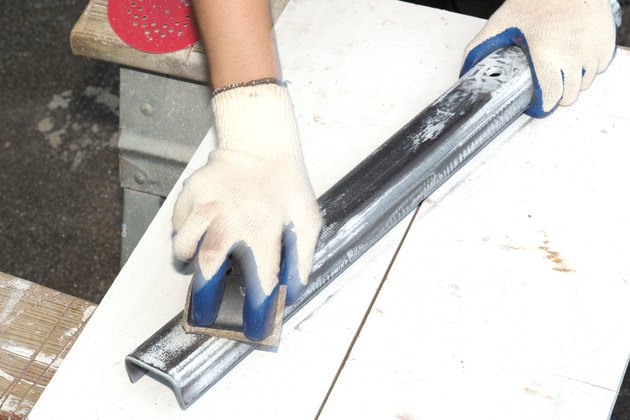
After sanding the whole metal surface, rub it with a steel wool to smoothen the surface.
3. Using a Belt Sander or Angle Grinder
If you need heavy sanding, belt sander or angle grinder is the right kind of tool for you. With a belt sander, you can sand metal to a satisfactory level but they are not the best sander to remove paint. But grinders, equipped with sanding discs for metal are best for heavy metal sanding. There are many kinds of grinders available on the market. You can use a pedestrian grinder or angle grinder in your DIY projects. Grinders come with a different kind of grinding disk. Before using a grinder, you should take necessary precaution as they are risky and you shouldn’t use them without proper safety kits.
How to Remove Deep Scratches from Stainless Steel?
It hurts when you spot scratches on your metal furniture. It can ruin the bold look of your kitchen or bedroom. Removing the scratch without destroying the glossy surface is a painful task. Well, if that’s the case with you, the following technique might console you. Here, I am going to explain how to remove deep scratches from stainless steel step by step:
- Place a 2000 grit sandpaper into the sink and let it become limp.
- Use a damp sponge to clean the metal surface and wipe it with a dry cloth.
- Soak a dry cloth with 2 tablespoons of olive oil, and rub it on the scratch.
- Take the damp wet sandpaper from the sink, and place it under the scratch.
- Slowly rub the sandpaper along with the grain of the steel. You can find the grain if you observe closely. Don’t put too much pressure while rubbing. Inspect the scratch after every 2 or 3 rubs.
- Clean the dirt with a cloth and apply olive oil repeatedly.
- Continue the process unless the scratch is gone.
- Clean the surface with a stainless steel cleaner.
Regular maintenance is the key to ensuring a long life of your furniture. To get the best look and utility from your metal furniture and tools, keep them rust-and scratch-free. Now, with these techniques, you can keep them shiny and glossy at all times.


